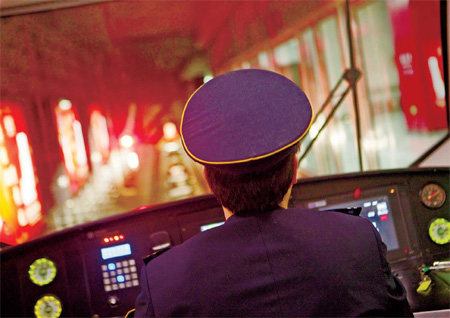Expanding subways ease crowded roads
China's growing urban congestion has prompted plans for newer and longer metro lines to ease the crowded roads. But the trains bring more than just commuting convenience. Often, they bring about a change of lifestyle, as David Cohen finds out.
People in the town of Nanshao are excited. The rural community, surrounded by farmland and unpaved roads and only 25 kilometers north of the second ring road, is one of the newest additions to Beijing's subway network. The residents believe that with the new train station will come economic development that will change the small township into a busy suburban community.
Locals predict that workers from Beijing will take advantage of the new metro line to escape the city, bringing money to the community, whose largest employer is currently a small window factory. Zhao, a taxi driver waiting near the station, predicts that his life would improve as people move to Nanshao to flee the pollution and congestion of the capital. "Once the seventh ring road opens, it's going to get even better," he says.
The market evidently agrees with his assessment. The two-street town is already bordered by construction sites and the skeletons of new high-rises, and locals say the price of an apartment has risen from the tens of thousands to millions of yuan in just two years. Nanshao's new subway station is the terminus of the new Changping Line, one of four new subway lines that opened early this year.
It is testimony to Beijing's ambition and the speed of its growth. For most of its length, the new line runs through open fields and small towns - and the construction sites that will transform the area into miles of densely populated suburbs. According to plans published by the department of transportation, it will ultimately be only a small part of a network that will add several hundred kilometers of track to Beijing's existing 400-kilometer system over the next four years, stretching far into the city's hinterland.
Public transport is critical to the growth of Beijing, like all Chinese cities. Rising car ownership, and movement to suburban areas driven by rising house prices, has given Beijing some of the worst traffic in the world. A 2010 survey conducted by IBM rated Beijing's commute as the worst in the world, tied with Mexico City.
Traffic, planners say, is more than a waste of time for commuters.
Jiang Pingzhou, an expert in transportation policy working for a foreign NGO, explains.
"The underlying concern is not just that congestion is bad, because it costs people more time, but that it causes bad air, which is a bigger issue. So even the driver stuck in traffic isn't paying the full cost of congestion."
Despite the scale and speed of construction on a system that has opened an average of two lines a year since 2007, transportation experts say the city faces enormous challenges coping with its growing population.
Li Meng, an associate professor of transportation planning at Tsinghua University who works with the city of Beijing on traffic issues, says Beijing's transport system is simply not catching up with the public need. "Even though we're growing fast, we're still behind," he says.
 0
0 








Go to Forum >>0 Comments